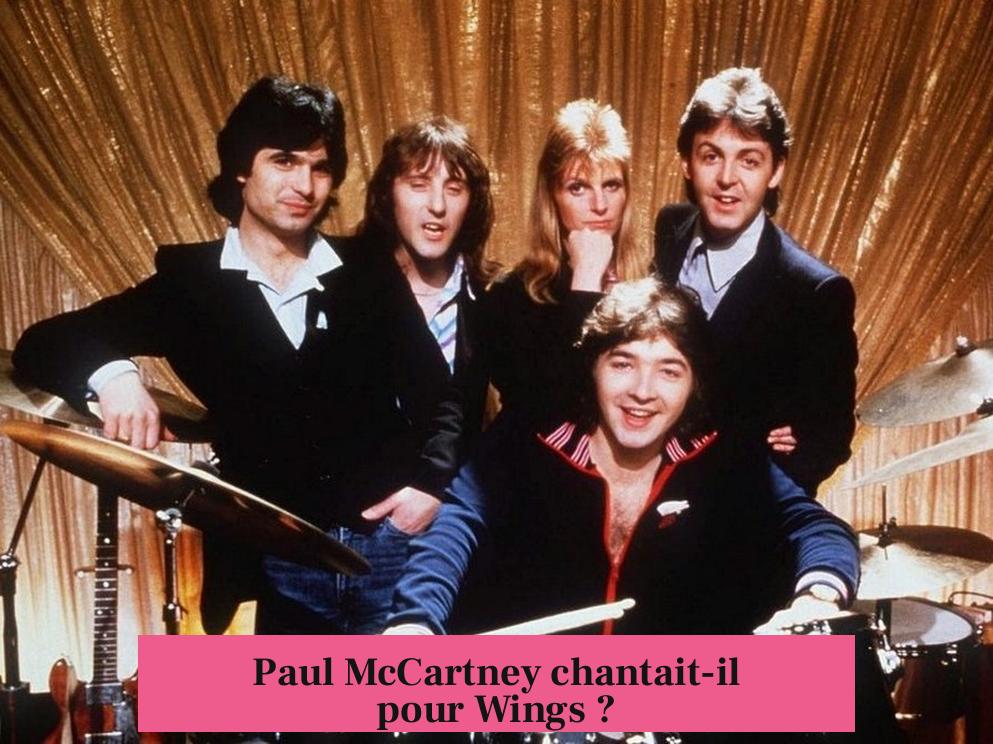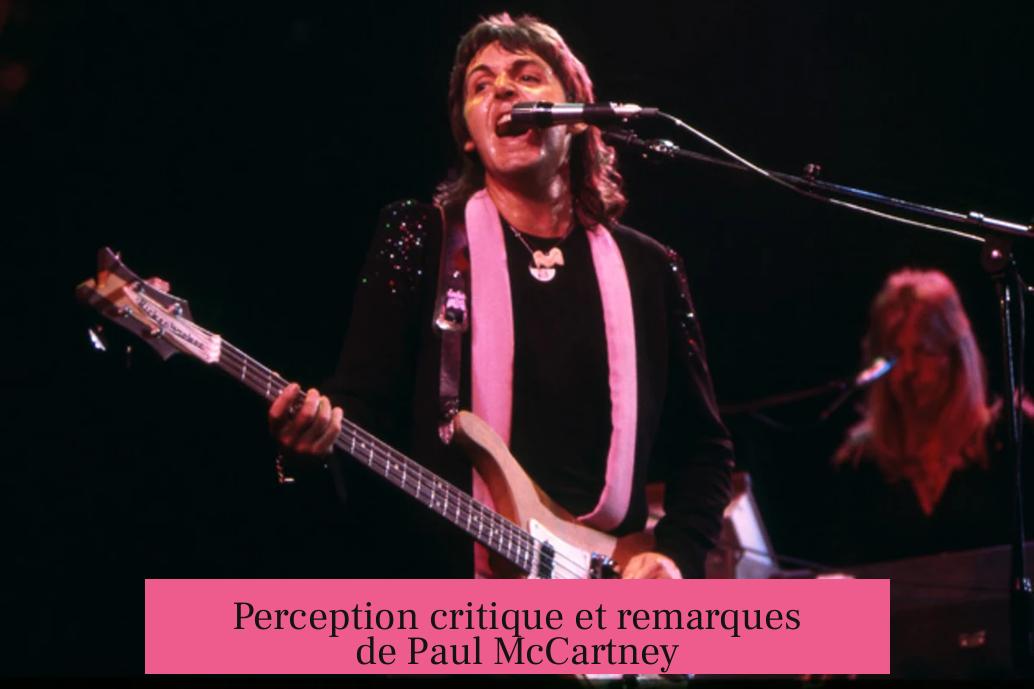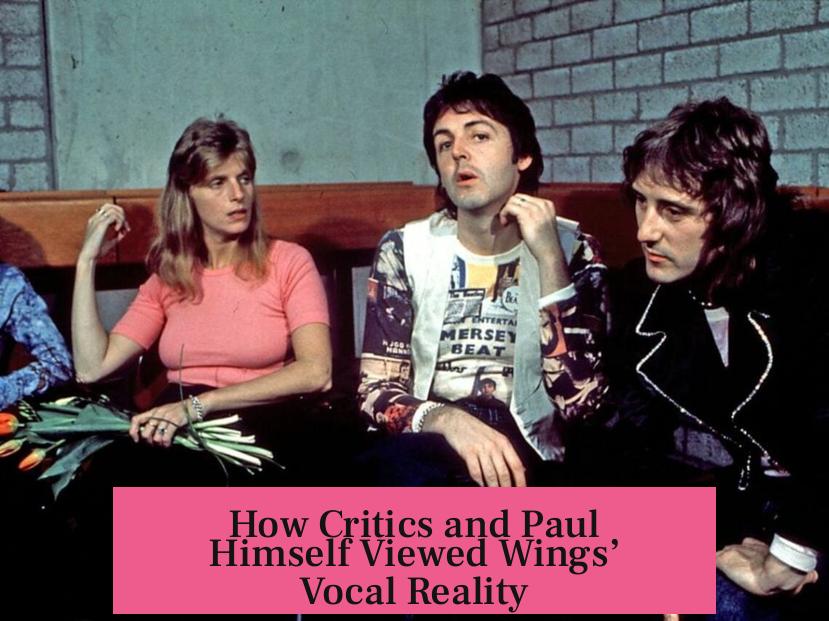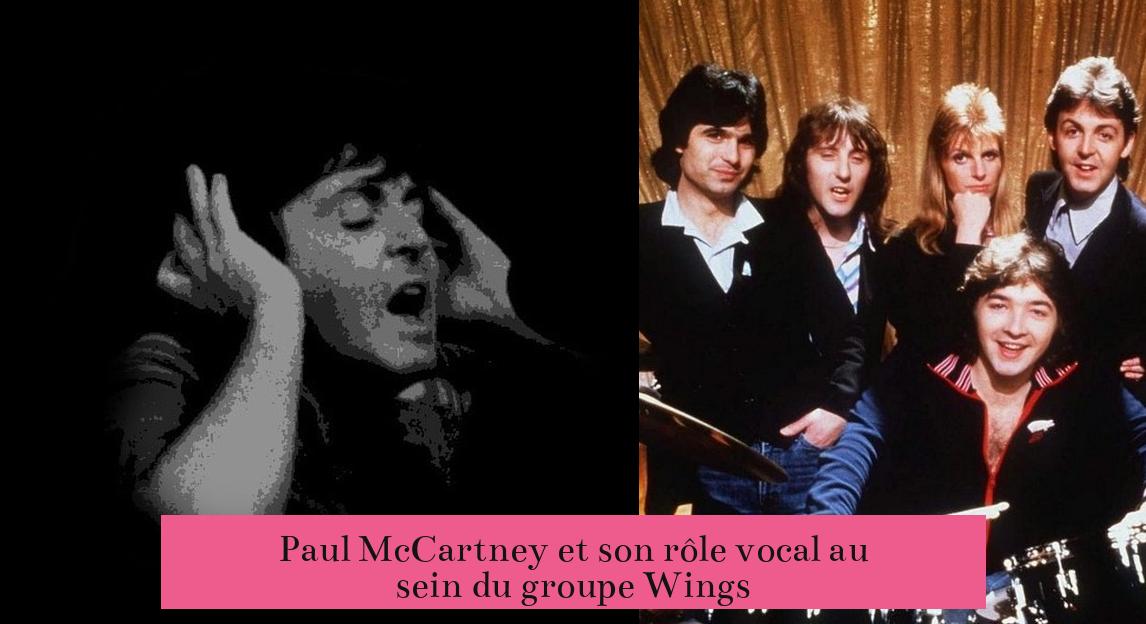Paul McCartney chantait-il pour Wings ?

Oui, Paul McCartney chantait pour Wings. Il était non seulement le fondateur du groupe, mais aussi la voix principale et la force créative centrale au sein de cette formation.
Création et composition du groupe Wings
Après la dissolution des Beatles en 1970, Paul McCartney cherche une nouvelle voie musicale. En 1971, il forme Wings avec sa femme Linda McCartney au clavier et chant, Denny Laine à la guitare et chant, ainsi que Denny Seiwell à la batterie. Ce groupe marque son passage vers une nouvelle identité artistique. Bien que le groupe ait connu plusieurs changements de membres, McCartney est resté le cœur et l’âme du collectif.
Le rôle vocal de Paul McCartney dans Wings
Paul McCartney joue un rôle majeur sur le plan vocal. Il partage les performances vocales avec Linda McCartney et Denny Laine, mais reste souvent la voix principale sur de nombreuses chansons. Wings interprète des titres comme ceux de la bande originale du film James Bond où Paul chante avec ses compagnons de groupe.
- Paul est souvent la voix lead dans les morceaux du groupe.
- Linda et Denny Laine assurent aussi des parties vocales, offrant variété et harmonie.
- Certaines chansons de Wings ont même été réutilisées plus tard en solo par Paul McCartney.
Collaboration et dynamique du groupe
Bien que Paul McCartney soit au centre de Wings, il valorise la collaboration. Le groupe fonctionne comme un collectif où plusieurs membres apportent leurs voix et compositions. Denny Laine, par exemple, était également chanteur et guitariste important au sein de Wings. Linda McCartney soutient la dynamique avec ses claviers et ses chœurs.
Exemples de contributions vocales :
| Membre | Rôle Vocal | Détails |
|---|---|---|
| Paul McCartney | Voix principale | Chanteur principal sur la majorité des titres, incluant des singles célèbres |
| Linda McCartney | Chœurs et voix secondaire | Assure le soutien vocal et parfois des lignes principales |
| Denny Laine | Chanteur et guitariste | Partage le chant, notamment sur certains morceaux spécifiques |
Perception critique et remarques de Paul McCartney

Certains critiques voient Wings comme un groupe moins maîtrisé que les Beatles, et Paul ne cache pas ses réserves. En 2016, il admet publiquement que Wings avait des faiblesses et que ce n’était pas un groupe parfait. Cependant, Paul reconnaît que Wings lui a permis d’explorer de nouvelles dimensions musicales et de poursuivre une carrière réussie après la fin des Beatles.
Conclusion
- Paul McCartney a fondé Wings en 1971 après la séparation des Beatles.
- Il était le principal chanteur et la force créatrice du groupe.
- Les membres Linda McCartney et Denny Laine contribuaient aussi au chant.
- Wings a servi de tremplin à McCartney pour une nouvelle identité musicale.
- Malgré des critiques mitigées, McCartney valorise l’expérience et la créativité du groupe.
Did Paul McCartney Sing for Wings? Unveiling the Truth Behind the Iconic Band
Paul McCartney—The Beatles legend—crossed an enormous threshold in 1971. After the Beatles disbanded, many wondered: Did Paul McCartney sing for Wings? The short answer: absolutely, yes! Wings was not only his new creative playground but also a vocal stage where McCartney flourished alongside his bandmates. Let’s dive deeper into how this legendary rocker transitioned and fronted Wings, the band that carved its own path in rock history.
Formed shortly after the Beatles’ split, Wings was Paul’s venture into crafting fresh sounds while finding his unique identity outside the shadow of the “Fab Four.” The lineup was intriguing from the start: Paul McCartney on bass, guitar, and vocals—with his wife Linda McCartney handling keyboards and vocals—and Denny Laine, once a member of The Moody Blues, playing guitar and sharing vocal duties. Drummer Denny Seiwell rounded out the foundation, having worked with Paul on his solo album Ram.
This core group wasn’t just a “Paul plus sidemen” scenario. Yes, Paul was the undeniable creative engine, but Wings was presented as a band with a shared spirit. Vocally, McCartney’s voice was upfront and central for many hits. However, vocals didn’t belong exclusively to him; Linda and Denny Laine contributed harmonies and took lead on some tracks, creating a dynamic vocal conversation. Singing was a democratic affair, but Paul, naturally, took lead most often—his post-Beatles voice resonated with fans eager for his next melody.
What It Meant for Paul to Sing in Wings
Being the founder, McCartney was more than a singer—he was the architect of Wings’ essence. His vocals not only carried catchy hooks but also conveyed the group’s evolving identity. Songs like “Band on the Run” and “Jet” showcased his voice—sometimes gritty, sometimes whimsical—yet always unmistakably Paul. His voice was the thread linking Wings’ music to his Beatles history and future solo work. On the James Bond soundtrack for Live and Let Die, Wings performed the title track with Paul’s powerful voice leading, further cementing his role as frontman.
A casual listener might imagine Wings was Paul solo, but the reality was more nuanced. Wings experimented with a lively and changing lineup—five configurations through its lifespan—and different voices shared the microphone. Yet, without Paul’s singing and creative direction, Wings would not have had the unique identity it boasts today.
From Collaboration to Solo, the Vocal Journey
Notably, Wings’ vocal lineup contributed to creating a broader palette of sounds. Linda’s keyboard harmonies and vocal support softened and enriched Wings’ texture. Denny Laine’s voice occasionally took the lead, producing memorable moments. This mix of voices demonstrated a genuine band effort rather than a single-man show.
Interestingly, after Wings disbanded, Paul revisited some unreleased Wings songs, using them as B-sides of his solo singles. This recycling reflects how strongly Paul identified with those pieces and shows that many Wings songs bore his vocal signature even if officially considered solo releases.
Adding a fun twist: during a surprise show at New York City’s Bowery Ballroom, Paul played Beatles, Wings, and solo hits alike, blending his vast career into a seamless experience. Fans reveled in hearing him slide effortlessly between his many vocal phases—the Beatles’ tender harmonies, Wings’ rock energy, and his solo confidence.
How Critics and Paul Himself Viewed Wings’ Vocal Reality

Now, here’s a juicy detail: even McCartney himself wasn’t shy about criticising Wings. On a 2016 BBC special, he remarked candidly, “We were terrible. We weren’t a good group.” Not exactly a sweet endorsement, right? But this self-deprecating humor doesn’t erase the fact that Paul’s singing defined Wings’ sound. It might just suggest that Wings never aimed to be another Beatles—a pure vocal or instrumental masterpiece—but rather a fun, experimental, and often imperfect rock adventure.
Ultimately, Wings was a collective, yes. But Paul’s voice was the band’s soul. Fans knew that when they heard Wings’ songs on the radio, Paul McCartney’s unmistakable vibrato and tone carried the narrative forward. The band successfully showcased McCartney’s versatility as a vocalist, different from his Beatles era yet equally compelling.
Final Thoughts: Why It’s Clear Paul McCartney Did Sing for Wings
So, did Paul McCartney sing for Wings? The evidence could not be clearer. From the very formation of the band in 1971, Paul was the primary vocalist and the creative force behind the songs. He led vocally on most tracks, sharing singing duties with Linda McCartney and Denny Laine to create a collaborative and rich vocal tapestry.
While Wings has often been unfairly boxed as a “bubblegum” or secondary band, the vocal performances—led by Paul’s versatile and expressive voice—show a gripping evolution in his career. They reveal a musician eager to explore new musical ideas while keeping his vocal identity front and center.
In the end, Wings stands as a testament: Paul McCartney didn’t just sing for Wings—he embodied the band’s very heart and voice, carving a unique niche in rock history just as powerful as his Beatles legacy.
Curious what your favorite Wings song reveals about Paul’s unique vocal style? Dive into albums like Band on the Run or listen closely to the Live and Let Die soundtrack. It’s clear: the voice behind those hits? Paul McCartney’s, all day long.
Paul McCartney chantait-il dans Wings ?
Oui, Paul McCartney chantait dans Wings. Il était le membre fondateur et le chanteur principal du groupe.
Est-ce que d’autres membres de Wings chantaient aussi ?
Oui. Linda McCartney et Denny Laine partageaient aussi les parties vocales avec Paul McCartney.
Paul McCartney considérait-il Wings comme un projet solo ?
Non, Wings était un groupe. McCartney n’était pas Wings seul, tout comme il n’était pas seul dans les Beatles.
Paul McCartney a-t-il joué des chansons de Wings lors de ses concerts solo ?
Oui, lors de certains concerts, il a interprété des chansons de Wings, ainsi que des morceaux des Beatles et de sa carrière solo.
Qu’a dit Paul McCartney sur la qualité de Wings ?
Il s’est montré critique, déclarant qu’ils étaient « terribles » et qu’ils n’étaient pas un « bon groupe » en 2016.

